 Accounting reporting is painful. At Metronome’s Tip Top Business Growth Summit, Spencer Sheinin shared ideas on how to put your financials in a format that can be more easily understood and acted upon.
Accounting reporting is painful. At Metronome’s Tip Top Business Growth Summit, Spencer Sheinin shared ideas on how to put your financials in a format that can be more easily understood and acted upon.
Sheinin listed three elements that influence or detract from making accounting information effective:
- Language – Sheinin provided the story of the measuring failure behind the Mars Climate Orbiter, and NASA's mix-up between newtons (metric) and pounds (imperial) (Watch video) as a classic example of this. Accounting language is often technical. Reporting outcomes is frequently a failure to communicate urgency and a proper understanding of what the numbers mean.
- Diagnosis – Who you have analyzing your numbers is just as important as what your numbers are in many cases. Not every accountant is an analyst.
- Emulsion – The definition of emulsion is a mixture of two liquids that don’t fully combine. We associate with like-minded people. Accounting and CEOs are seldom like-minded. If you as CEO have a good rapport with your CFO, you have a rare advantage.
Overcoming Language, Diagnosis, & Emulsion Issues
Sheinin provided an example of how he would share financial reporting information with his CEO, and leadership team. He asked for a volunteer from the audience to be the CEO. Then he shared slides of how the business was currently performing asking the CEO how he felt.
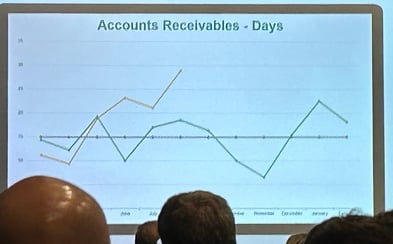 The simple approach requires taking the extra step to make the financial reports more meaningful by putting reports into graphic representations.
The simple approach requires taking the extra step to make the financial reports more meaningful by putting reports into graphic representations.
Most of us get our financial reports comparing our current numbers to either last year, our forecast, or both.
Seeing these numbers in a financial report is helpful.
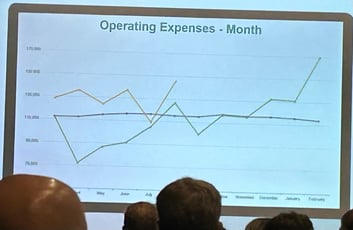 Sheinin shared these same reports using graphics to illustrate the differences that numbers in a financial report don’t provide.
Sheinin shared these same reports using graphics to illustrate the differences that numbers in a financial report don’t provide.
Graphically comparing the current numbers to last year provides a striking contrast, to make your results pop out. As he went through each KPI comparison, he would ask his audience “CEO” how he felt about each. The response was not good based on the numbers. By doing so, this dramatization provided evidence of why painting a picture to tell a story is a much more effective way to communicate.
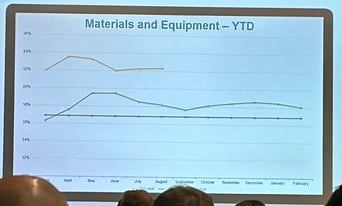 The following slides from the event share vividly the difference between last year’s performance and this year’s performance in terms of COGs, Inventory, Materials and Equipment, Operating Expenses, Direct Labor, Accounts Payable, and Accounts Receivable.
The following slides from the event share vividly the difference between last year’s performance and this year’s performance in terms of COGs, Inventory, Materials and Equipment, Operating Expenses, Direct Labor, Accounts Payable, and Accounts Receivable.
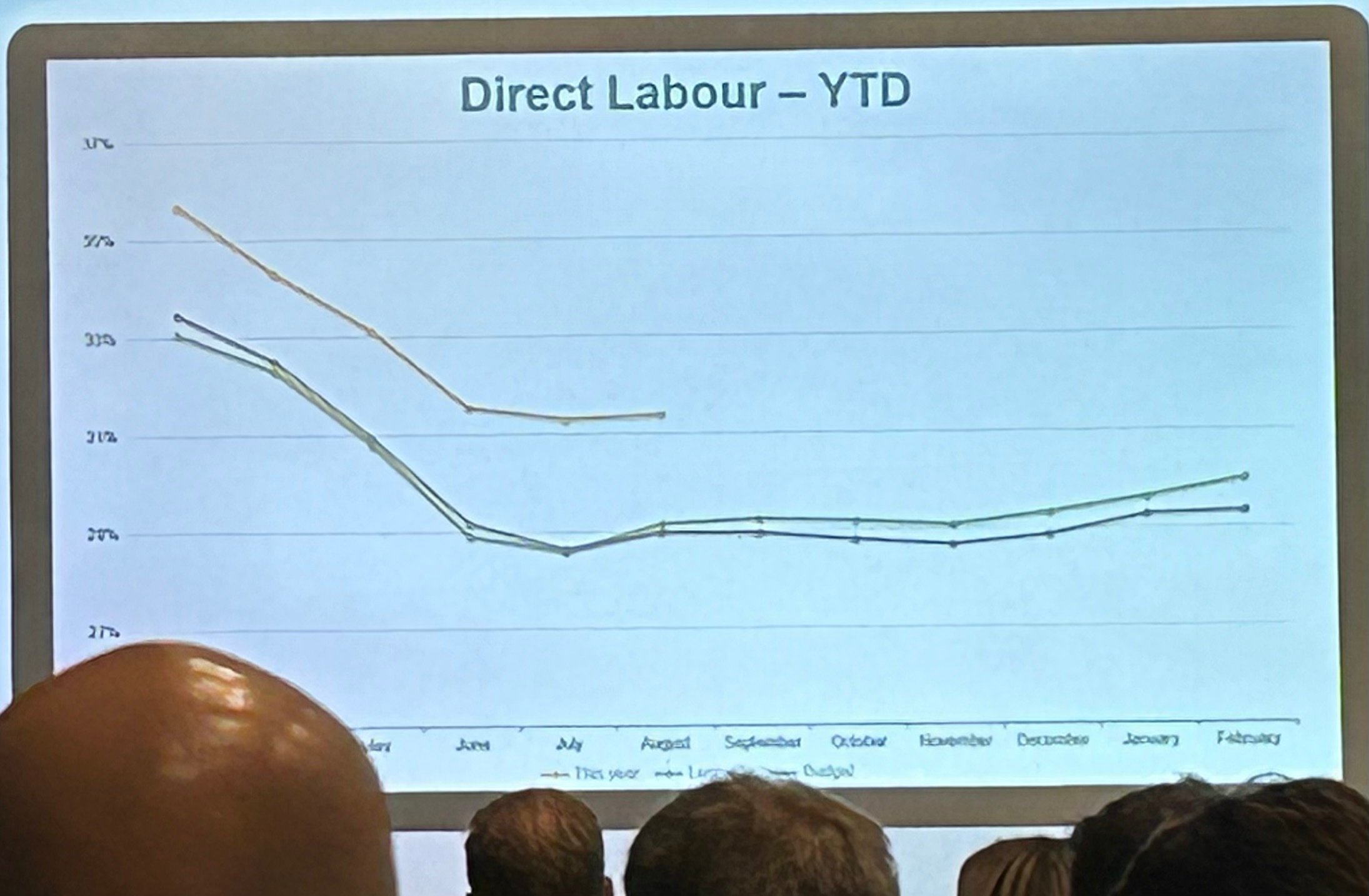
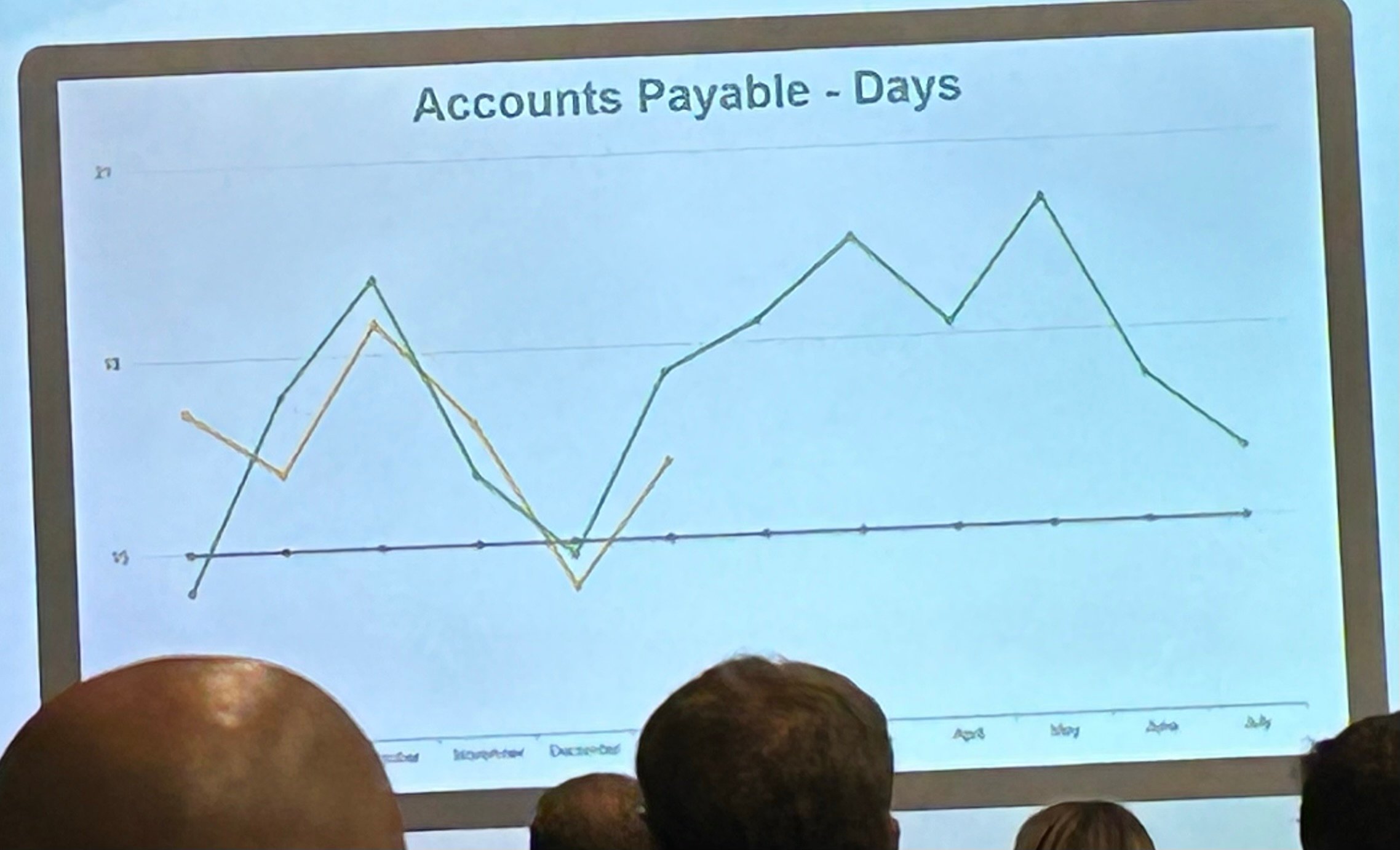
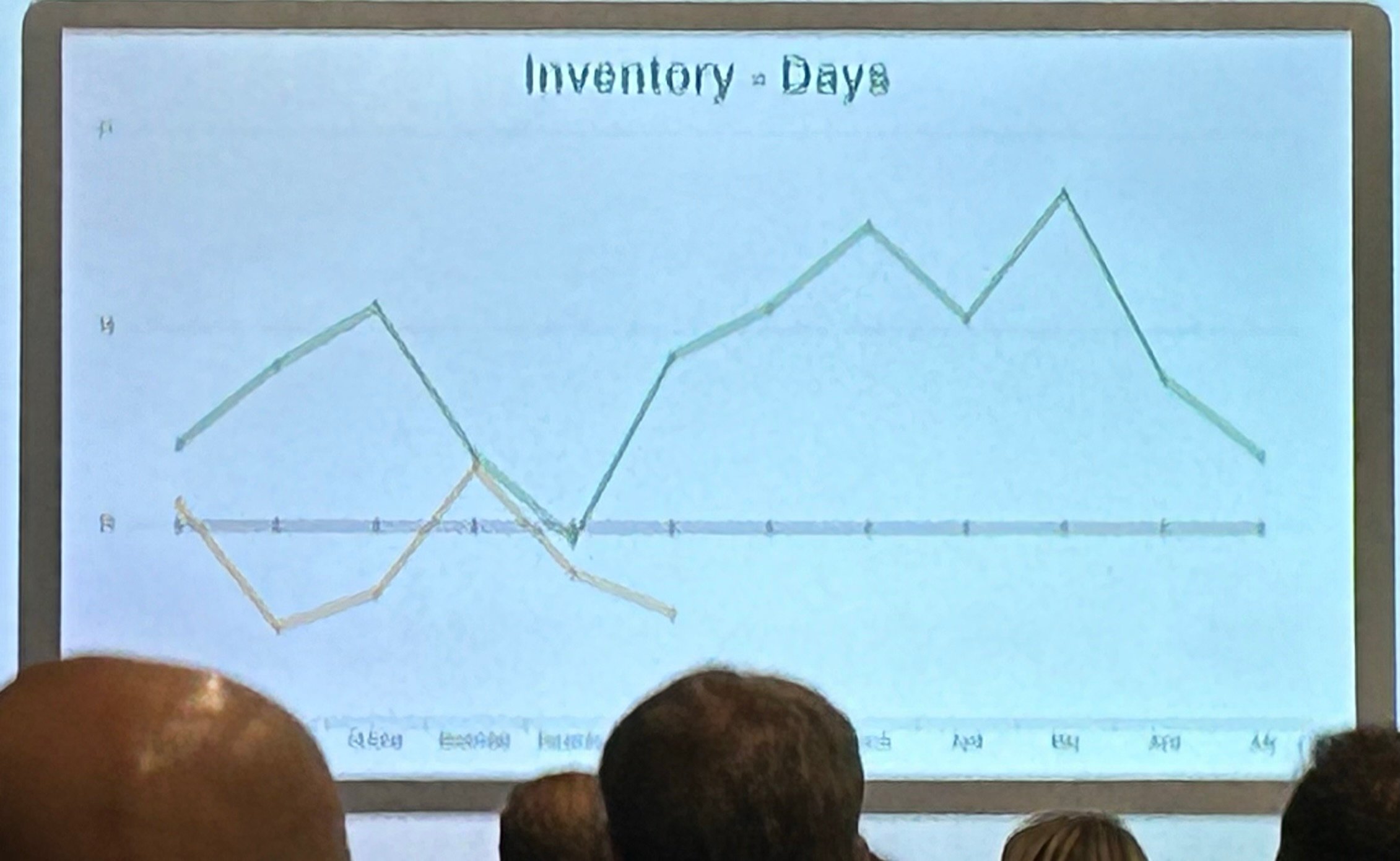
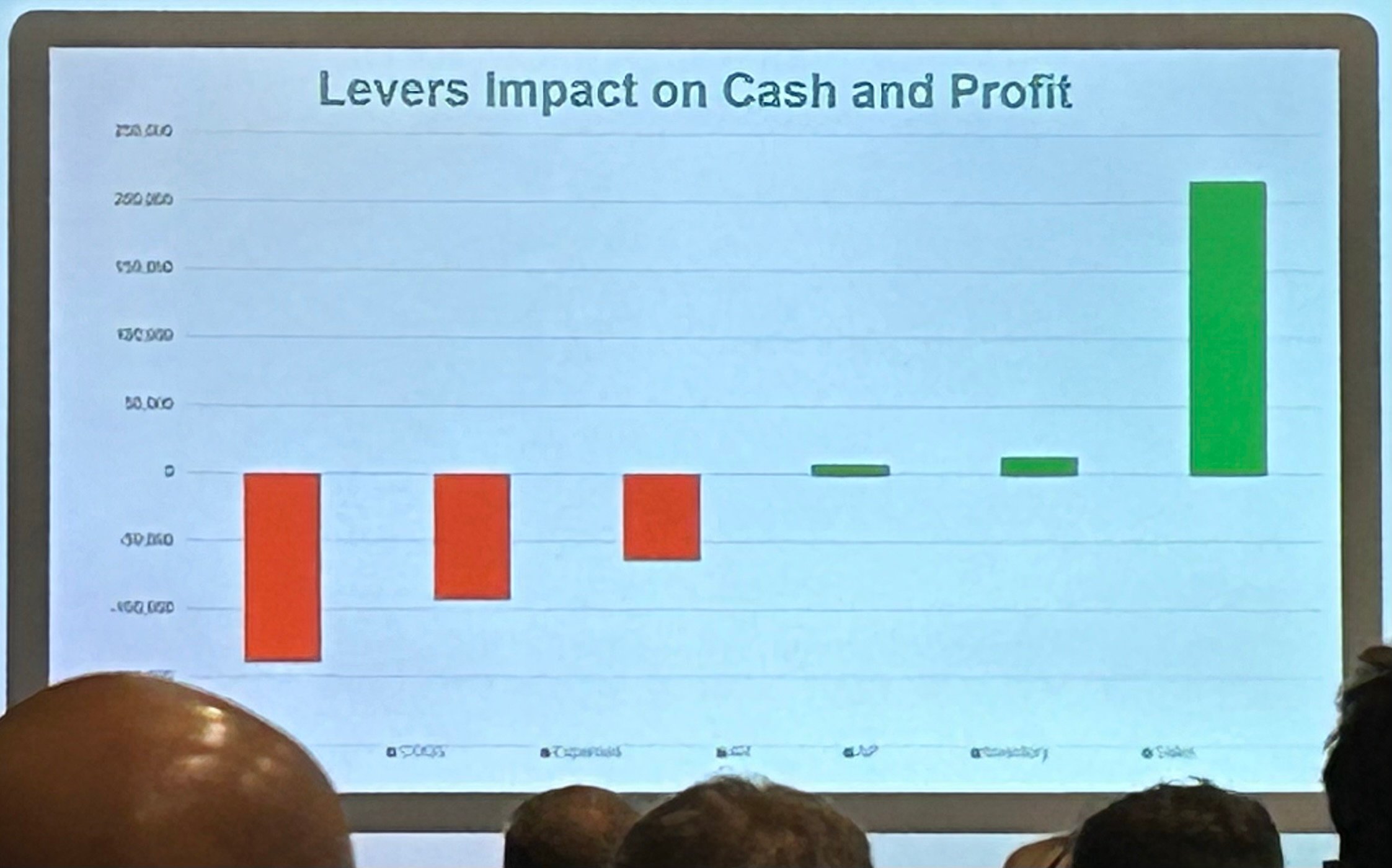 KEY Financial Levers
KEY Financial Levers
Sheinin also reinforced the POWER OF ONE (1%): 7 KEY FINANCIAL VARIABLES YOU CAN INFLUENCE. Scaling Up Partner Alan Miltz’s My Cash Flow Story provides 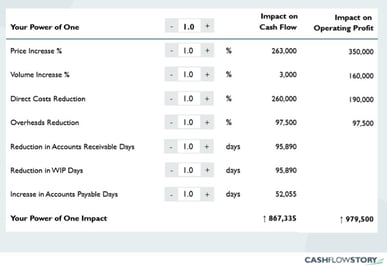 our clients insights on how just a 1% increase in one of these critical levers can dramatically improve your business performance. If you want to discover how these 7 levers can improve your business performance, please contact me for details on how we can share from your current financials statement where to improve your cash flow and profit, and increase your business value!
our clients insights on how just a 1% increase in one of these critical levers can dramatically improve your business performance. If you want to discover how these 7 levers can improve your business performance, please contact me for details on how we can share from your current financials statement where to improve your cash flow and profit, and increase your business value!
Sheinin offered these empowering steps using visuals to tell your story.
Five key takeaways from his presentation:
- Hygiene vs. Insights – Delivering your financials in a report fails to provide valuable insights into your current financial situation. Get your accounting team to tell a story visually of what’s going on.
- A picture is worth a 1000 Words
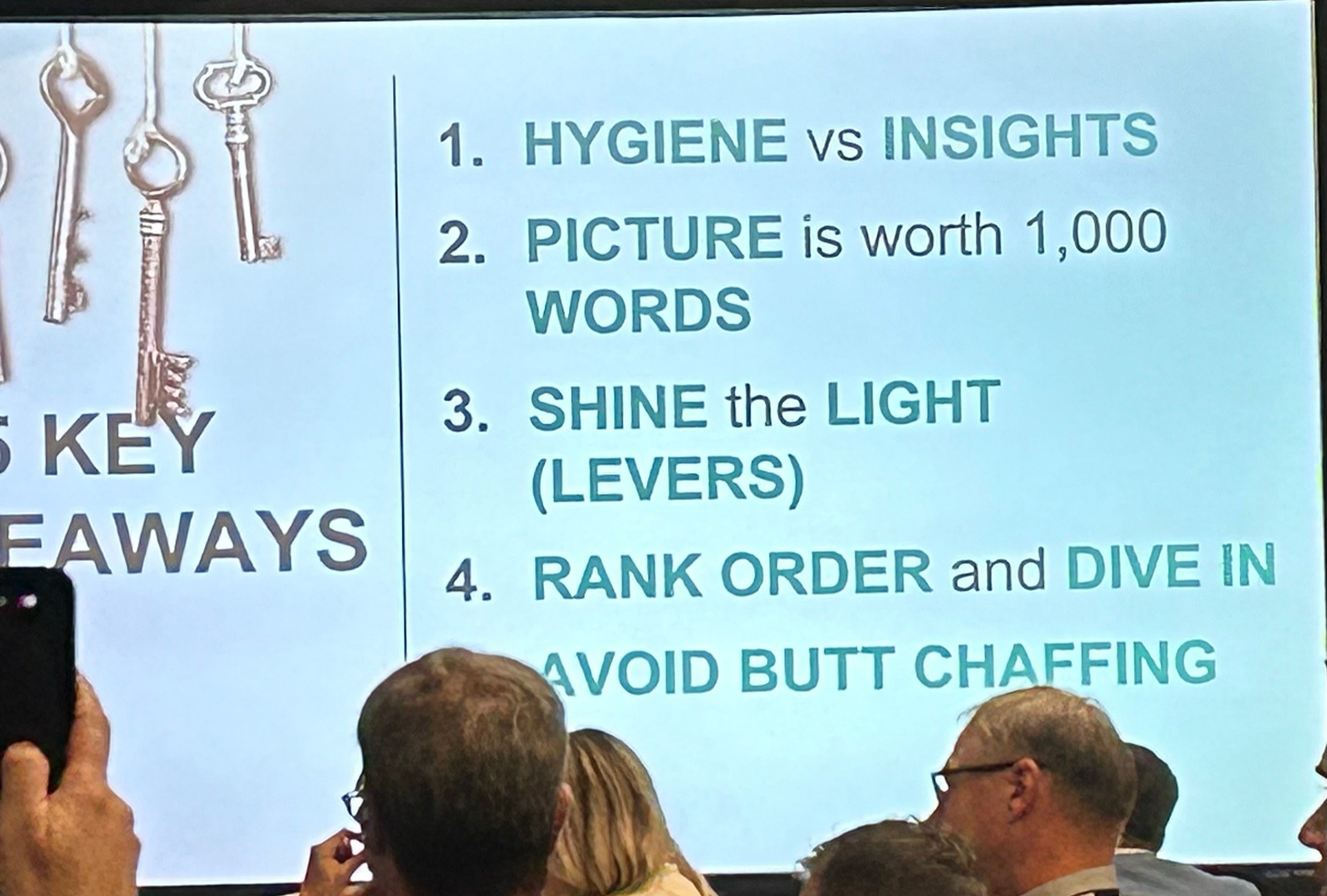
- Shine the Light (Levers) - focus on the 7 levers that impact your business the most.
- Rank Order and Dive In – offer your financials in the hierarchy of their critical importance to your business.
- Avoid Butt Chaffing – If you need to understand why this should be avoided please visit Three Reasons Never to Blame or Criticize. Putting blame on someone rarely solves a problem. Get busy developing a solution instead of playing the blame game.
Keep your financial meetings quick, simple, and intuitive. Sheinin offered great insights on how to deliver your financials in a format and manner to influence action.
To create an environment where everyone is inspired to give their best, contact Positioning Systems today to schedule a free exploratory meeting.
Growth demands Strategic Discipline.
 You might wonder what your business can learn from a successful restaurateur like Danny Meyer. In Setting the Table: The Transforming Power of Hospitality in Business, Meyer shares a lesson he learned as he struggled to get his team to meet his standards of excellence. Next blog, Danny Meyer’s saltshaker lesson.
You might wonder what your business can learn from a successful restaurateur like Danny Meyer. In Setting the Table: The Transforming Power of Hospitality in Business, Meyer shares a lesson he learned as he struggled to get his team to meet his standards of excellence. Next blog, Danny Meyer’s saltshaker lesson.
Building an enduring great organization requires disciplined people, disciplined thought, disciplined action, superior results, producing a distinctive impact on the world.
Discipline sustains momentum, over a long period of time, laying the foundations for lasting endurance.
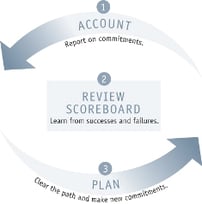 A winning habit starts with 3 Strategic Disciplines: Priority, Metrics, and Meeting Rhythms. Forecasting, accountability, individual, and team performance improve dramatically.
A winning habit starts with 3 Strategic Disciplines: Priority, Metrics, and Meeting Rhythms. Forecasting, accountability, individual, and team performance improve dramatically.
Meeting Rhythms achieve a disciplined focus on performance metrics to drive growth.
Let Positioning Systems help your business achieve these outcomes on the Four most Important Decisions your business faces:
| DECISION |
RESULT/OUTCOME |
| PEOPLE |
|
| STRATEGY |
|
| EXECUTION |
|
| CASH |
|
Positioning Systems helps mid-sized ($5M - $500M+) businesses Scale-UP. We align your business to focus on Your One Thing! Contact dwick@positioningsystems.com to Scale Up your business! Take our Four Decisions Needs Assessment to discover how your business measures against other Scaled Up companies. We’ll contact you.
NEXT BLOG – Where Should Your Saltshaker Be






.jpeg?width=150&height=135&name=Hand%20with%20marker%20writing%20the%20question%20Whats%20Next_%20(1).jpeg)

